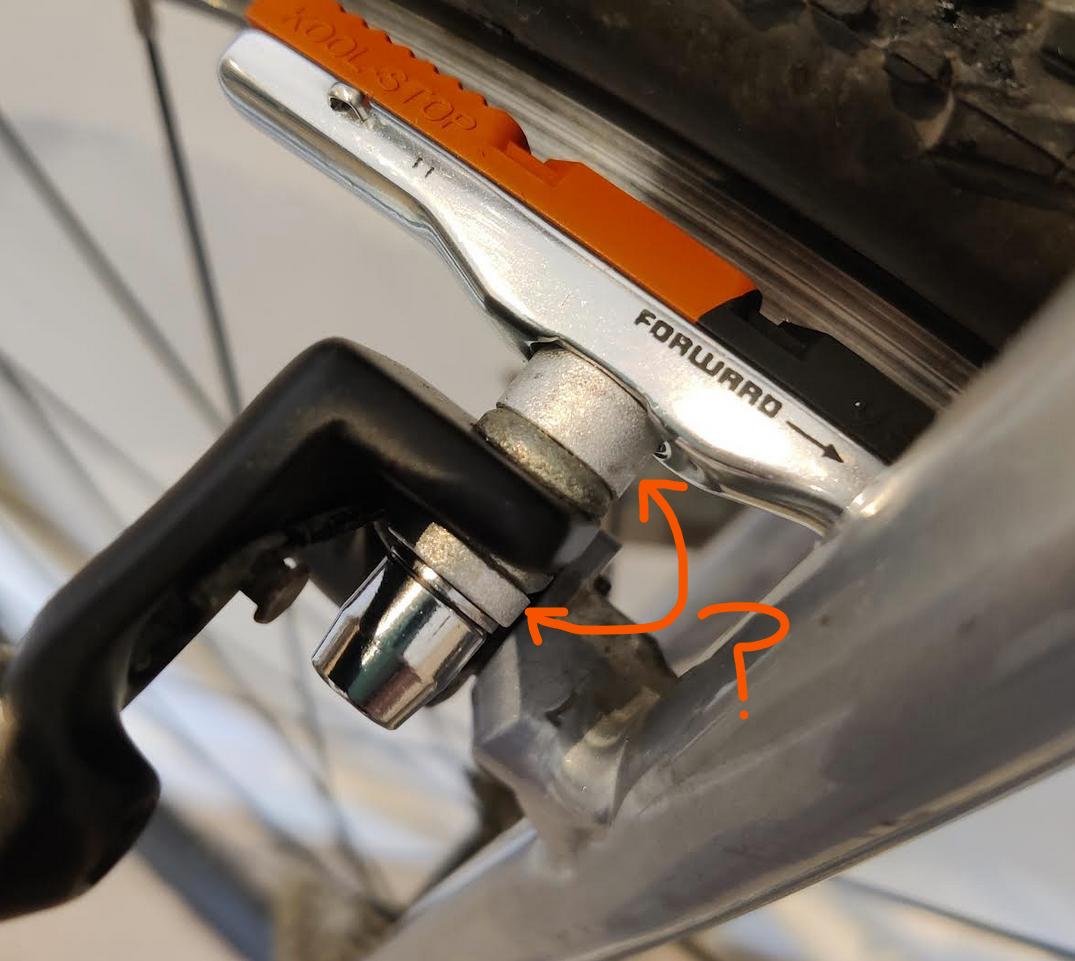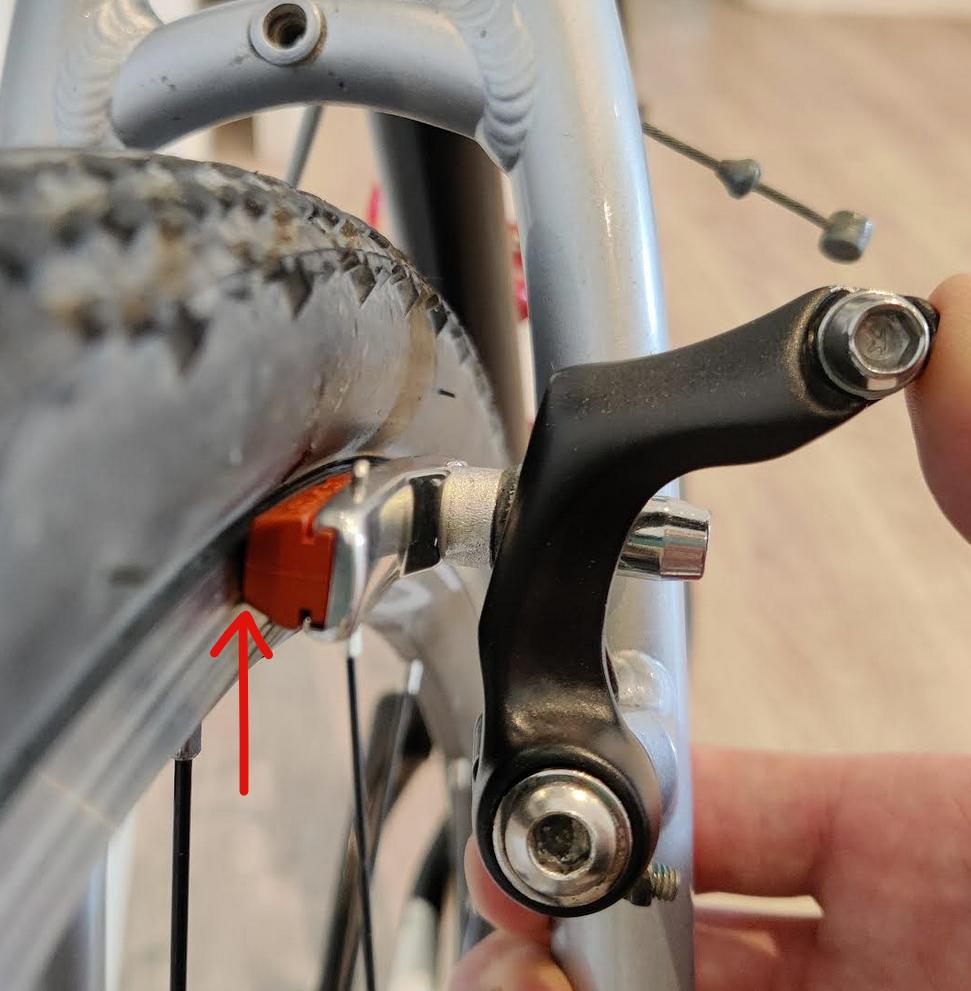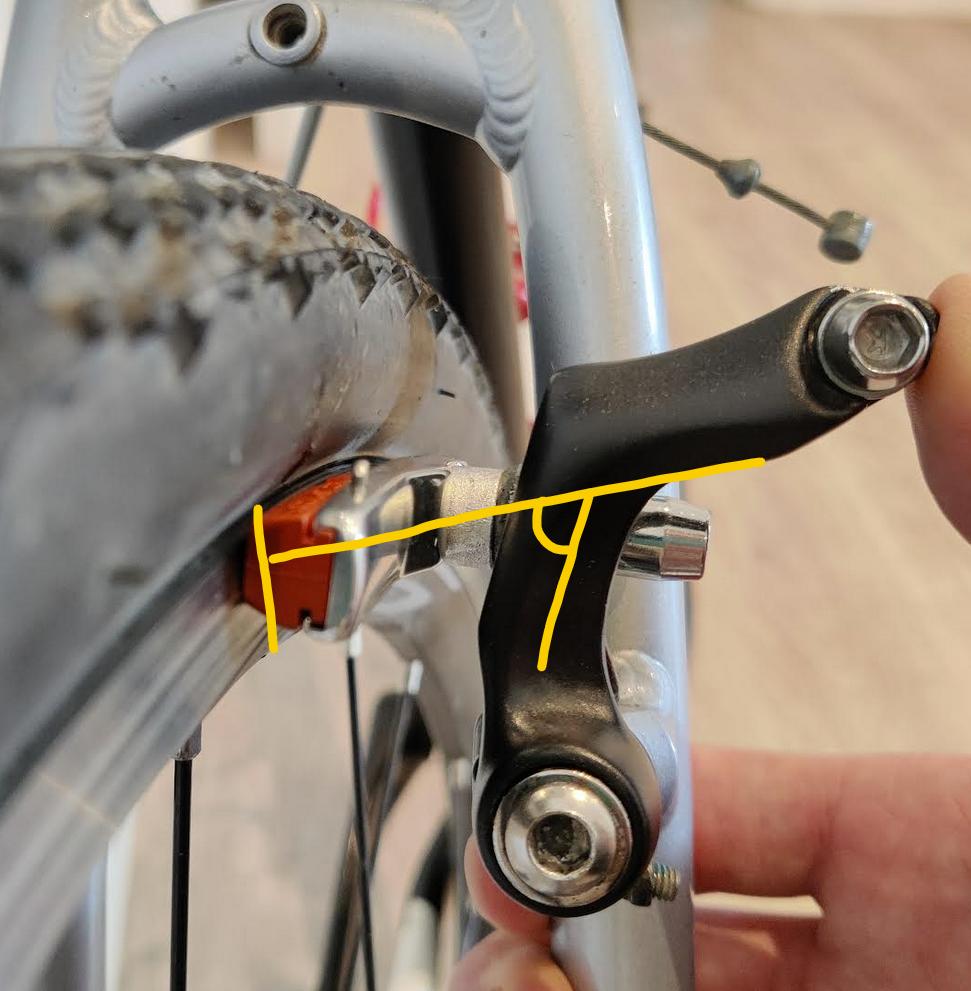I'm reinstalling the rear cantilever brakes after taking them off for a thorough cleaning. I'm also upgrading the pads at the same time to a Kool Stop model with "extra material" (i.e. thicker than standard pads).
I'm having a lot of trouble getting the pads to sit at what I think is the ideal position where when they contact the rim, they're flat against it in the vertical plane, with a slight toe-in, and with the top edge of the pad hitting just below the top edge of the rim.
Right now this is about the best I've been able to do:
As you can see the bottom edge of the pad is contacting the rim way before the top edge.
I'm not sure of the model of brake, but they came stock on a 2010 Specialized Tricross, and are the kind where the brake shoe has a threaded bolt out the back that passed through the brake arm with a set of rounded washers on either side that allow you a lot of freedom in pad positioning.
I'm finding that if I loosen the bolt and manually position the brake pad exactly how I want it to hit the rim, and push the brake arm in so they're both in the right position for initial contact, I can get it just right. So the cup washers and other components have the degree of mobility required to position it right.
But getting the pad positioned right requires the bolt to pass through the brake arm almost as high up as it can go, i.e. something like the yellow line here...
... and no matter how hard I try to hold everything in place while tightening the bolt, it inevitably shuffles back to a position where the bolt is closer to normal to the face of the brake lever arm it passes through. Which has the effect of tipping the pad up slightly into the position shown above.
It feels like part of the problem is the extra pad thickness is making the pad contact the rim earlier than maybe the frame and brake geometry is ideally suited for.
So I've got two questions:
- Is there something fundamental I'm missing here?
- Is it OK to swap the inner and outer cup washers? The inner one is much thicker than the outer one, so doing that would move the pad straight back towards the brake arm by a couple of mm I think. I.e. can I do this:
 I think doing that would allow me to get the right initial pad/rim contact position with the bolt much lower in the brake arm and therefore easier to control as it's tightened.
I think doing that would allow me to get the right initial pad/rim contact position with the bolt much lower in the brake arm and therefore easier to control as it's tightened.


